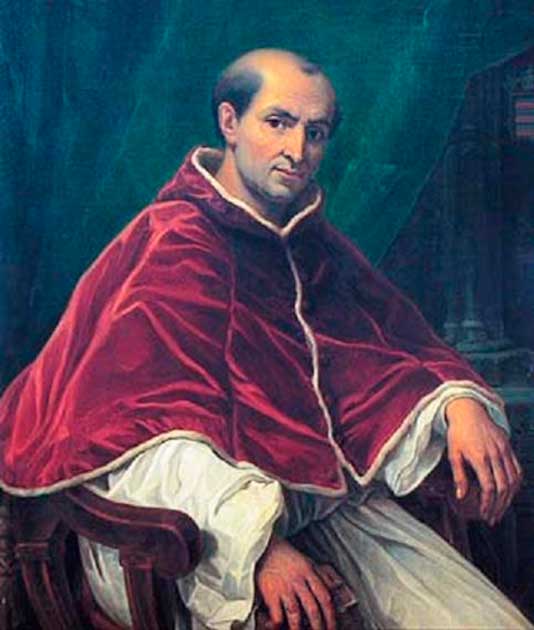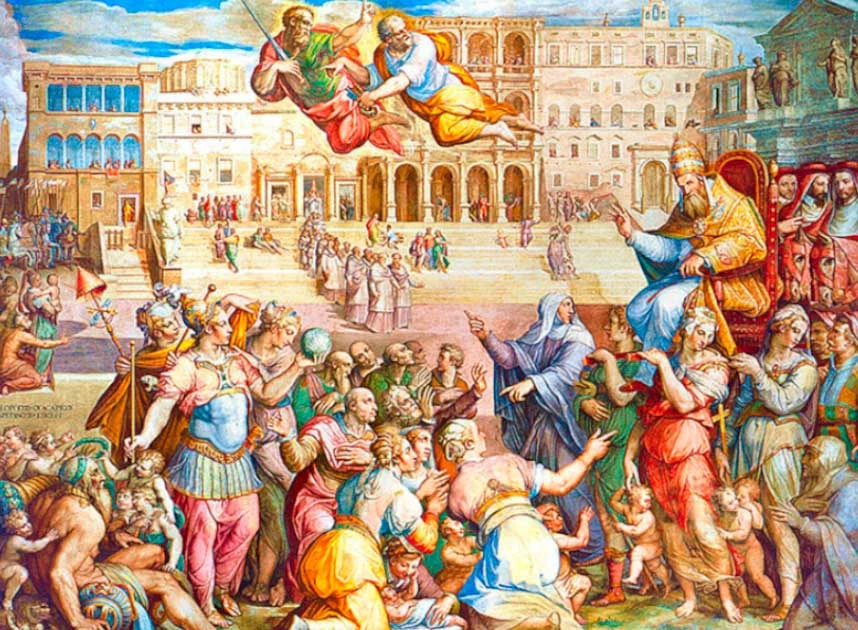Rome, and the Vatican, has been the head of the Catholic Church for the last two millennia. At least that is the impression given, but in that time the church itself has dealt with several body blows. From the exit of England under Henry VIII to Martin Luther’s breakaway Protestantism, the church itself has even split in two based on disagreements between Rome and Constantinople.
There was even a time when the Catholics couldn’t even agree where they should be based. From 1309 to 1377, Rome was no longer the center of the Papacy. Instead it was relocated to the French city of Avignon.
The move was announced by French-born Pope Clement V, and the decision came in the wake of a disturbed and divided political environment in Rome which also threatened the stability of the Papacy. Faced with this factionalism in Rome, the Pope was pressed by the French king Philip IV to come to France and take residence in Avignon. It was as simple as that: the Pope would henceforth live in France.
In the year 1348, the city of Avignon became a direct property of the Papacy. All seven popes that took up the papal residence in Avignon were French by birth and residence. Moreover, most of the cardinals of this period were also French by birth.
This brewed animosity between the Papacy and the English and German monarchies. The Avignon Captivity period was a significant period for the Papacy as many reforms were introduced during this period, and different changes happened to the Papacy. The Avignon Captivity will eventually lead to the Great Western Schism between the popes of Rome and the antipopes of Avignon.
The Start of the Avignon Captivity
It was not just Pope Clement V who was facing problems in maintaining the Papacy in Rome. For the greater part of the 13th century, many of the earlier Popes to Clement V were unable to lead a peaceful life in Rome.

Towards the end of the 13th century, during the 1280s and 1290s, Rome witnessed bitter rivalries between the different influential families of Italy. The Papacy was at the root of this unrest, and to avoid any further deterioration of the Papal reputation, Pope Clement V took up the Avignon residence and changed the center of the Papacy for the greater part of the 14th century.
- The Great Schism: Would The Real Pope Please Stand Up?
- The Albigensian Crusade: Why did the Catholics start a Civil War?
Rome, with its small shopkeepers and its large banking families, depended on the Papacy and the influx of pilgrims into the city. The move to Avignon was, therefore, not amenable to the Romans and other kingdoms of Europe, who suddenly saw their tourist revenues dry up.
The Popes of Avignon were able to rule over the French city for many years. There was a brief revolution in Rome however when in 1347, Cola Di Rienzo styled himself as the Tribune of Rome and talked of the apocalypse and the revival of Rome’s glory. However, the revolution had a more dramatic effect on the population than a political impact.
The arrival of the Black Death in the city and the death of more than 10,000 citizens reduced Rome to a shadow of its glorious past. Even though the Avignon Captivity was over by 1377, the return of the Papacy in the 1400s did very little to elevate the atmosphere of impoverished Rome. In the 15th century, Rome was reduced to a village of huts, overrun with vermin and with thieves stalking the streets.
A Reformed Church?
The Avignonese Popes found themselves in a strange situation. After centuries of orthodoxy and dogma which surrounded previous Roman popes and often stymied them to inaction, these new French Popes could act to modernize the church, independent from the power structures of the Vatican.
However, there was the matter of the French kings who exercised considerable influence over their new domesticated Popes during the period that they were residing in Avignon. The French Influence on the Papacy was very prominent during this period. And, emboldened and empowered, the Popes at this time were trying to introduce many reforms and change the difficult situation around the Catholic church. The reforms were directed toward achieving peace in Christendom.
The reforms included the reorganization and reform of administrative offices and other agencies that were associated with the Papacy. The centralization of the offices and different processes included in the Papacy was a reform that the Avignonese Popes wanted to introduce, streamlining the bureaucracy and making it more efficient.
Moreover, missionary efforts were extended into different areas of the world. For example, the missionaries even reached China and took up the task of expanding Christianity to new countries and areas. Other reforms included the introduction of University Education, something which came to be very important in Rome.
On the other hand, the College of Cardinals would not sit inactive. They also played an important part by taking up a greater role in Government and Church Affairs, taking up key roles in Church Affairs so ensure the distribution of power was balanced between the Pope and his Cardinals.
- Pope Joan: Did The Church Elect a Female Pope?
- The Templars, the Mandaeans and Gnosticism: Forbidden Worship?
On the other hand, there were various attempts to resolve secular conflicts and establish peace in the state. The Papal state also tried to resolve royal conflicts between different countries and monarchies. However, the animosity between the Papal state with different monarchies led overall to the decline in the reputation of the Papacy.
Many monarchs thought that the Papacy was losing its independence and unbiased structure by coming under French Influence. While the Avignonese Popes were still nominally independent, they were all French by birth and there were some Popes who gave in to the pressure put on by the French Royal Court.
For example, Pope Clement V was seen to bow to the pressure exerted by King Philip IV of France once he was in Avignon, and the Papal proclamations certainly aligned with French interests during this time.
A Divided and a Weakened Church
Although Avignon was the Papal center, most kings of other countries believed that the Papacy was now under the French Crown and had lost its importance. Avignon was purchased from the vassals of the Papal state, but the monarchs believed that the French Crown now economically supported the Papal state, and the Papacy had lost its control over its own affairs.

Moreover, the Papacy was somewhat divided as a considerable portion of its territories was in Italy. However, the officials that were present in Italy had to answer to the French authorities. Corruption was already there in the Papal state when the center was in Italy, but the Avignonese Popes came under more criticism than before.
The Avignonese Popes were attacked by the Romans as Rome lost much of its Influence and economy because of the Avignon Captivity. The city was often called the Babylon of the West, and this shaped the reputation of Avignonese Popes to a great extent who were even accused of being the Antichrist.
On January 17, 1377, the Avignon Pope Gregory XI decided to return to Rome. However, his return to Rome was also plagued with a lot of issues. The Pope even wanted to return to Avignon. At the end it was little more than a wrinkle of circumstance that led to Rome once again hosting the Papacy: Gregory died before he could return the Papal center to Avignon, and the Papacy remained in Rome. The rest is history.
Top Image: The Papal Palace in Avignon, home to the Popes of the Avignon Captivity. Source: Chimigi / CC BY-SA 2.0 FR.
By Bipin Dimri